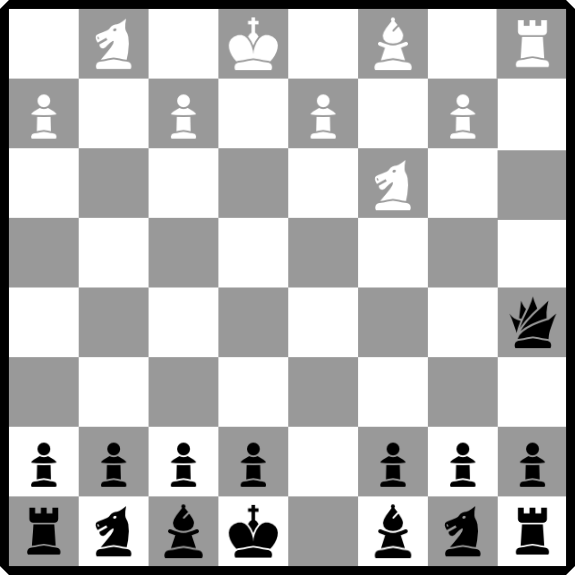The Scandinavian defence is described in an ancient poem titled, Schachs d'amour, which translates in Valencian to "Chess of love", Valencian is the root of modern day Catalonian, the language spoken on the eastern coast of Spain as well as in the French Pyrénées-Orientales. The manuscript was written around 1475, it was discovered in 1905 and it describes a fictitious chess game in which black responds with D5 to challenge white's E4 opening. The poem uses the game as an allegory for love, in which white is represented with red pieces (Mars, Man, Passion, War), and Black is represented by green (Venus, woman, peace), the game ends in a pure mate in which white is victorious. The poem is in fact the earliest recorded game of chess in which the modern day rules are described, specifically in reference to the moves of the queen and bishops, however it is unclear if at the time to complete modern day rules were in use, since neither side castles or captures en passant.
The defence is named in honour of the Scandinavian chess masters, who in the 19th century analysed, and demonstrated that it is playable by black. Though it has never enjoyed widespread popularity, it can be an excellent surprise weapon against an opponent who is unfamiliar with the defence. Despite the fact that it exaggerates white's opening advantage, the gain in position is not significant enough to refute the opening.
The defence is named in honour of the Scandinavian chess masters, who in the 19th century analysed, and demonstrated that it is playable by black. Though it has never enjoyed widespread popularity, it can be an excellent surprise weapon against an opponent who is unfamiliar with the defence. Despite the fact that it exaggerates white's opening advantage, the gain in position is not significant enough to refute the opening.




































































































































